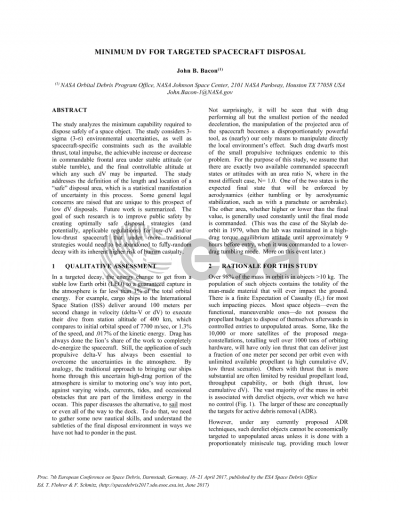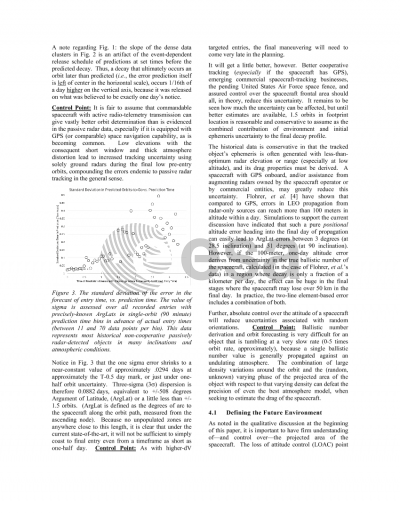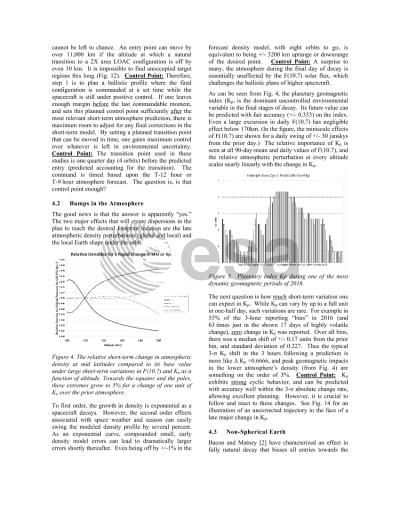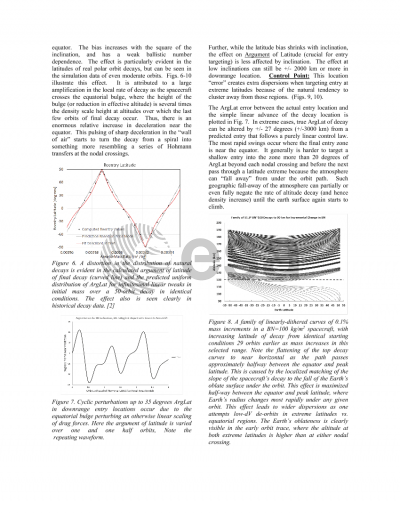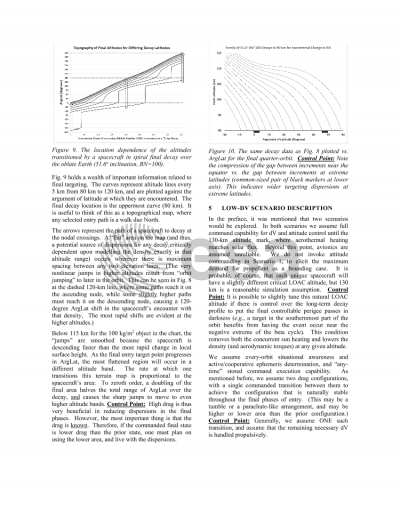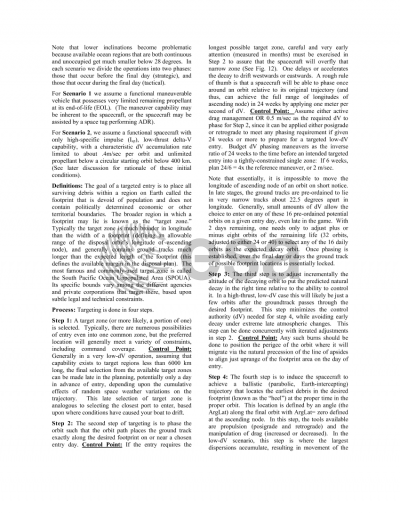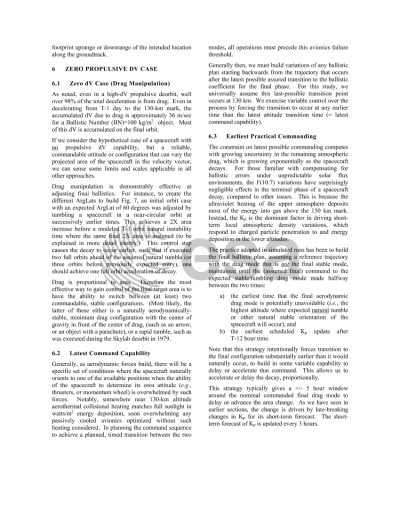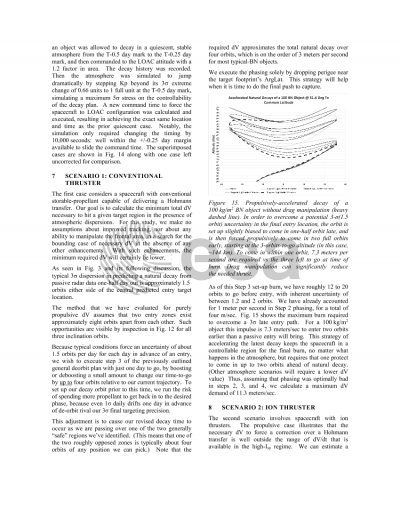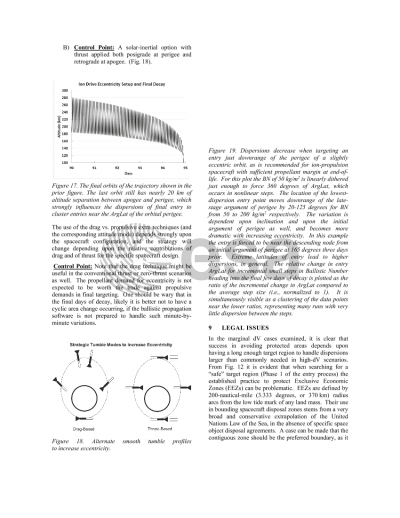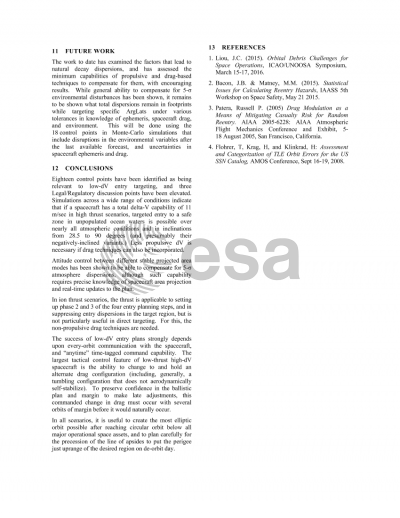Document details

Abstract
The density scale height of the Earth’s atmosphere undergoes significant reduction in the final phases of a natural decay. It can be shown that for most realistic ballistic numbers, it is possible to exploit this effect to amplify available spacecraft dV by using it at the penultimate perigee to penetrate into higher drag regions at final apogee. The drag at this lower pass can more effectively propel a spacecraft towards the final target region than applying the same dV direct Hohmann transfer at that final apogee. This study analyzes the potential use of this effect-- in combination with small phasing burns--to calculate the absolute minimum delta-V that would be required to reliably guide a spacecraft to any specified safe unoccupied ocean region as a function of ballistic number, orbit inclination, and initial eccentricity. This calculation is made for controllable spacecraft in several orbit inclinations and eccentricities with arbitrary initial LAN and ArgP one week before final entry, under three-sigma atmospheric perturbations. The study analyzes the dV required under varying levels of final controllable altitude at which dV may be imparted, and various definitions of the length and location of a “safe” disposal area. The goal of such research is to improve public safety by creating assured safe disposal strategies for low-dV and/or low-thrust spacecraft that under more traditional strategies would need to be abandoned to a fully random decay.
Preview
